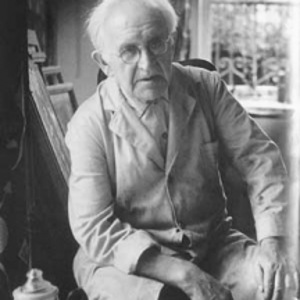Pranas Domšaitis: the language of figurative painting 3
In brief: The South African-Lithuanian painter of the 20th century Pranas Domšaitis is certainly a representative of figurative painting. In his works, his visual texts, he seeks to know the reality of his country of residence, which for him is the Other, a different experience than Lithuania. P. Domšaitis’ works are dominated by color, the essential and unique sign of his work is an inimitable coloring determined by the South African reality.
There are characters in the figurative layer of his works - locals, mostly black people. The artist often ignores a big city, a megapolis, which would be no different from the US or the Western European reality. Instead he chooses a desert or a suburb dominated by bright colors. This is the basis of P. Domšaitis' landscapes. In his works, that in addition to natural objects capture people, the performers and locations complement each other. South Africans in P. Domšaitis' works are so close to their environment that they even merge with it.
The narrative structure of P. Domšaitis paintings is characterized by tracing the stages of competence and fulfilment: the actors in his paintings often act in their usual living environment, in which they have to overcome the emerging challenges. The works that capture nature are dominated by the stage of fulfilment - the culmination of the action (sea storm, desert evening and etc.). Biblical paintings, the most unique of which is Crucifixion stored at the South African National Museum of Art, also creates the scene of fulfilment stage.
P. Domšaitis' painting is only as expressionist as the developing art of photography that was trying the possibilities of expression back then. A unique capturing of chiaroscuro by shading was as important to P. Domšaitis, as the subjective creative interpretations. However, contemporary viewer of P. Domšaitis’ works is more interested in the phenomenological relationship with the semiotic structure that dominates the works and is driven by the goal of knowledge. On the other hand, because of the limited Lithuanian knowledge of life and history of the South African countrymen, P. Domšaitis remains the tool and method for knowledge.
P. Domšaitis is an author to whom the exile was a very new experience, the Other, which only became his "own" through painting. Painting for the Lithuanian artist is not a therapeutic or interpretive action, but above all, a cognitive act, in which of course also lies interpretation based not on the Lithuanian culture, but on the expanding South African "horizon of expectations" with a new reality.


